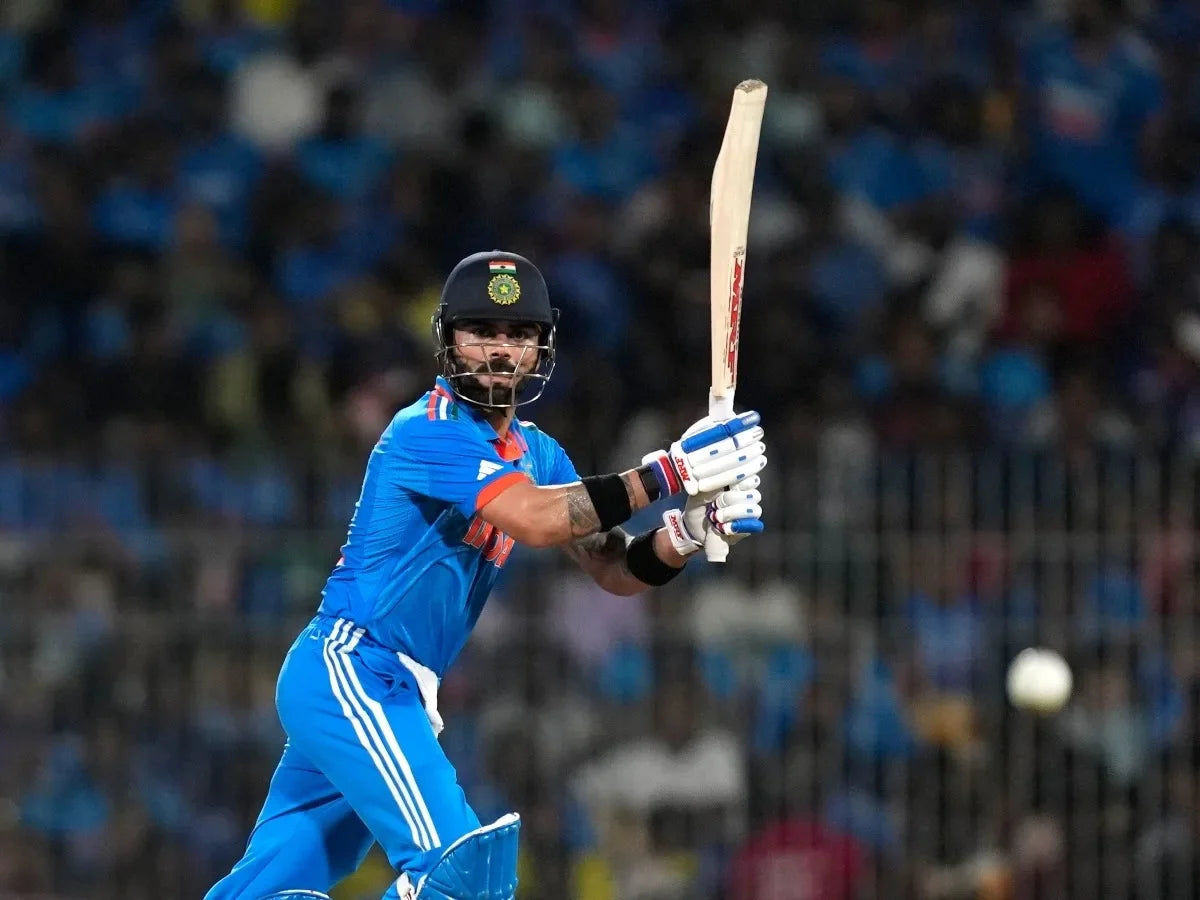For the past 10-15 years, the Indian Cricket Team's batting order has seen a lot of changes when it comes to which batter plays at what position. There have been multiple opening combinations, like Rohit Sharma - Shikhar Dhawan, Rohit - Rahul, Rohit - Gill and now Rohit - Yashasvi and many more. So many players have been candidates for the number 4 batting position as well, Rayudu, Pant, Kl Rahul, Shreyas Iyer, etc. The finisher position also has had so many candidates, like MS Dhoni, Hardik Pandya, Ravindra Jadeja, etc. But one spot always remains secured, and that is the No. 3 batting position, held rightly by one of the greatest cricketers of all time, Virat Kohli.
Batting at number 3 isn’t for everyone, you have to be at the top of your game to be playing at this position. That’s the reason we see players like Steve Smith, Joe Root, Kane Williamson, and Babar Azam, who are some of the best batters of this generation, hold this position on their respective teams.

Credit: India TV News
But why is batting at number 3 in the batting order so difficult? What skills or mentality does it require to excel playing at this position? In this article by ZAP, let’s find out just that.
Number 3: A pillar to entire batting line up
The batter coming as one down has to play the role of an anchor. They should be prepared to face all kinds of bowlers with equal efficiency, whether the ball is swinging, seaming, or spinning. Plus, they need to have great adaptability. They might have to face a new ball or an old ball, depending on the situation. The new leather ball has a tendency to swing and skid, and the latter has a tendency to spin. Moreover, the most important role they play is to support the opening batters. If the openers have given a good start, it is the role of the No. 3 batter to carry on with the momentum. If the opening pair fails, it is his job to control damage and form partnerships with other batters.
To always be at the top of your game, grab a ZAP Cricket Bat and start dominating the game.
The techniques Required for batting at number 3:

Credit: News 18
At many occasions, when conditions are difficult, we often see the opening batsmen fail against a swinging new ball and the number 3 batter have to come in and save the day. When a batter has to play with the new ball, he has to use his top hand and time the ball initially. Start of slow and wait until he’s set to take on bowlers. You should have a good control over the strokes such as the the front foot and backfoot defence, cover drive, straight drive, flick shot, off drive and other along the ground shots.
On the other hand, when openers have batted well and given a good start, the batter at number 3 has to carry on the momentum by taking on bowlers, with a calculated risk. Batting against an old ball requires a batsman to play horizontal bat shots and hence needs to have a strong bottom hand. You should have a good hold on strokes like the pull shot, the sweep shot, the cut shot, the hook shot and similar other slogs. Also you need to be very good at tackling both spin and swing with confidence.
Also Read: Cricket Batting Footwork | Power Hitting in Cricket
Controlling damage
If early wickets fall down, a batter coming at one down needs to alter their game and tackle the new ball so that no more damage is done. And if the opening partnership lasts long, they need to come and score from the get go. Batters coming at number three get a fair idea of the cricket pitch condition through openers, and based on that judgement, they are required to act immediately. They have a great responsibility in driving the team’s score to right direction, be it when setting a target or chasing one.
Spot suitable for best among the best

Credit: The Express Tribune
Batting at number 3 is not easy, and often only the most accomplished stroke players on the team are given this spot. The team management needs to have confidence that the batter coming down at one down is highly skilled and a great exhibit of maturity, experience, and mental strength. Records are a testament to the fact that the world’s finest batter come in this order. Whether it’s modern day cricket, or the old-day game, one-down batting position are always handed to batting maestros.
Also Read: The right Mindset while Batting
Indian Maestros batting at number 3:
Many profound batters of the Indian team have carved their name in history as they excelled in batting at one down. Here’s a list of the best Indian batters batting at the number 3 spot.
|
Batsman |
Matches |
Runs |
100s/50s |
|
Virat Kohli |
522* |
26,733 |
80/139* |
|
Rahul dravid |
509 |
24,208 |
48/146 |
|
Mohammad Azharuddin |
433 |
12,593 |
29/79 |
|
Mohinder Amarnath |
154 |
6302 |
13/37 |
Best Overseas Batsmen at Number 3 Batting Position:
Some of the greats from across the globe who came and dominated batting at this spot are:
|
Batsman |
Country |
Matches |
Runs |
100s/50s |
|
West Indies |
298 |
15,261 |
35/90 |
|
|
west indies |
430 |
22,358 |
53/111 |
|
|
Ricky Ponting |
Australia |
560 |
27,488 |
71/146 |
|
Ross Taylor |
New Zealand |
450 |
18,199 |
40/93 |
Conclusion:
Batting at Number 3 position is tough and might be the most difficult position to bat at. But we cannot ignore the impact that other batters at other positions have in the success of a batting lineup. Openers have to see of the swinging deliveries and set a platform for other players to come and play freely. Middle order batsmen are the backbone of the lineup and the finishers have the job of giving the team momentum and winning their matches. So, we cannot ignore the contributions a batsman makes, irrespective of the batting position.
Now that you have read about the skills and responsibilities required for batting at number 3, here are some more article that will help you develop more skills:
Spin Bowling Techniques | Fast Bowling Techniques | Swing Bowling techniques



Share:
Longest Sixes in IPL History: The Strongest Batsmen | IPL Records
The Story of India's 2011 ICC ODI Cricket World Cup Triumph